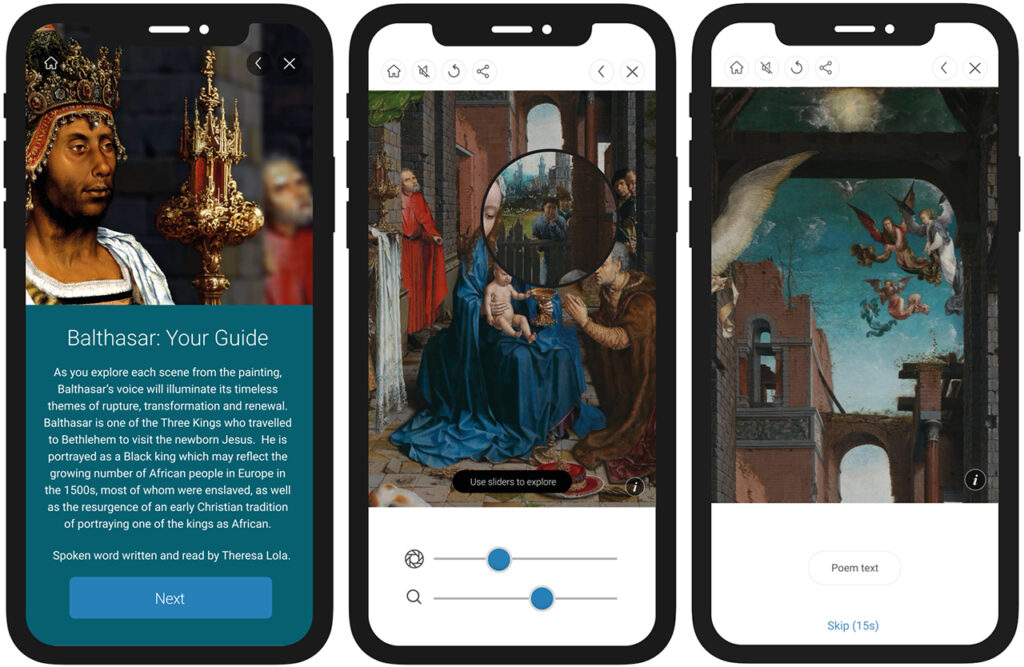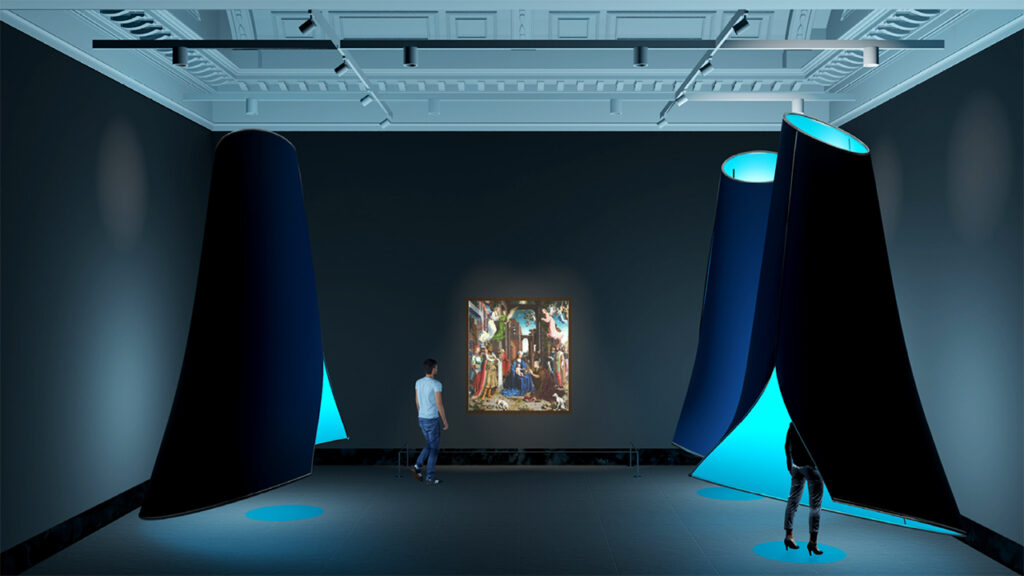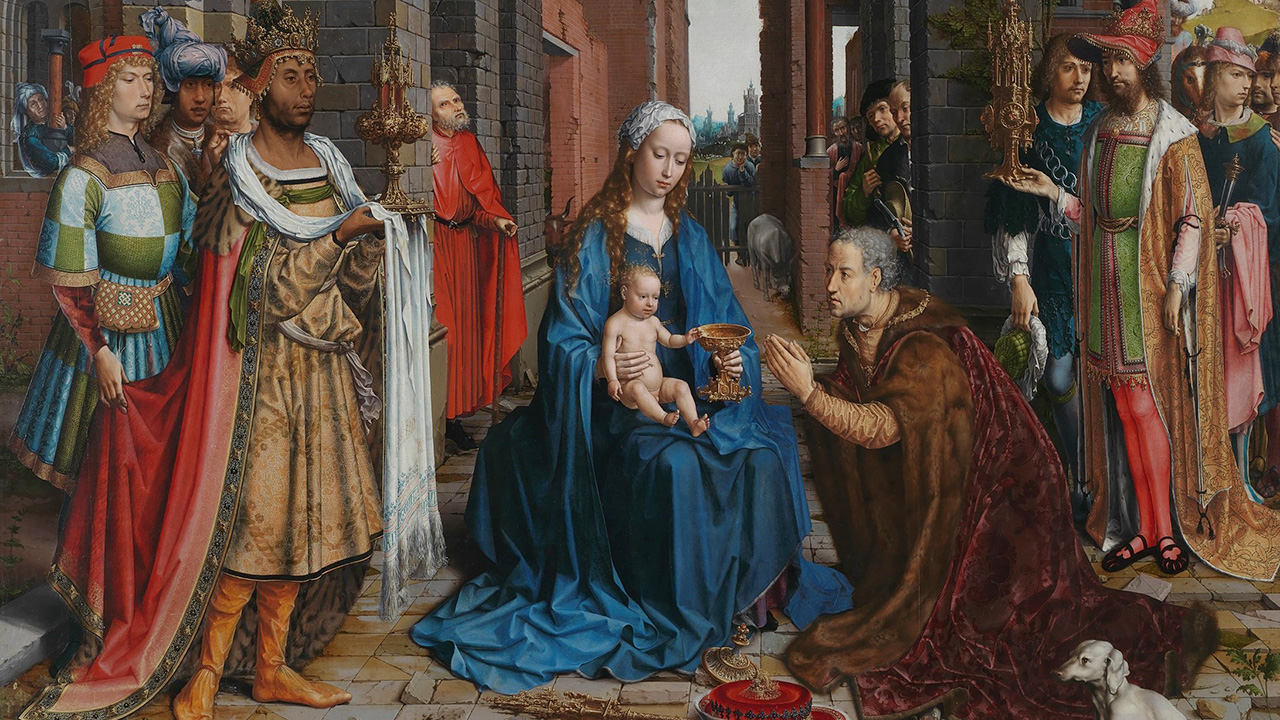The National Gallery’s immersive exhibition, Sensing the Unseen: Step into the Gossaert’s “Adoration,” got off to somewhat bumpy start when it opened back in December 2020. Just a week into its run, a country-wide shutdown forced the London institution to close its doors, spurring the museum’s team to reimagine a radically different future with potential audiences. The show was initially designed for socially distanced pods of visitors as a multidisciplinary journey through a single high-resolution image, a digital experience further augmented by the sonic stylings of composer Nick Ryan and poetry by 2020 London Young People’s Laureate Theresa Lola.
Unseen’s second iteration, a mobile experience set to go live today, April 2, will build on the National Gallery’s offer to bring the U.K.’s greatest artistic jewels into the nation’s homes through the use of interactive technology.
How it works

The mobile edition of Sensing the Unseen, featuring details from Gossaert’s “The Adoration of the Kings.” Image: © The National Gallery, London
Exclusive to Android devices, this virtual experience celebrates the work of Jan Gossaert, the French-speaking Northern Renaissance painter of the early-16th century. His 1515 masterwork, “The Adoration of the Kings,” is considered one of the most significant pictorial advances in art history — a busy, detail-rich symphony in oil on oak that speaks to themes of renewal and revelation.
The mobile exhibition features six of Theresa Lola’s poems written in the voice of King Balthasar, who appears in the painting’s lower left-hand quadrant (and wears Gossaert’s signature on his crown), each of which interprets a separate scene embedded in the piece. Users will travel through each scene bolstered by lyrical, guided observation, exploring compositional moments like broken pavement or watchful angels. “Anti-disciplinary” composer and audio specialist Nick Ryan will provide a musical landscape for Lola’s words, further enriching viewer absorption.
Visitors will be able to zoom into Gossaert’s visual details and share their favorites on Instagram. The National Gallery will use data analysis from these interactions to better understand how people engage with paintings on mobile devices.
Why it matters

Artist’s impression of the in-person Sensing the Unseen exhibition. Image: Vasilija Abramovic, © The National Gallery, London.
The exhibit, both in its original form and mobile-based version, were created as part of the museum’s Innovation Programme, a 2018 initiative launched by the then-Secretary of State to stimulate the relationship between the art and technology sectors. “Our aim through the Innovation Programme is to create enjoyable, meaningful experiences which engage new and more diverse audiences with the collection in different ways, placing our visitors at the heart of the design process,” says Emma McFarland, the Innovation Programme Lead at the National Gallery.
Gossaert’s painting was scanned last fall at the Gallery’s Innovation Lab, guaranteeing the highest possible resolution quality currently available. Users will be introduced to formerly “unseen” elements of the painting, those not immediately evident to the naked eye, through the tandem powers of technology and artistic collaboration, lending the experience a distinctly holistic, human ethos.
Why it matters
While the move to a month-long mobile experience may look like a consolation prize at first glance, the digital transformation of Unseen actually bodes well for post-pandemic exhibition production, particularly for audiences increasingly reliant on technology to contextualize their relationships with art objects.
Many museums all over the world are investing in labs, third-party mixed reality partnerships, and high-profile technological collaborations with venues like Google Arts & Culture to maintain interest in their collections. The National Gallery’s investment in the digital horsepower to transform a classic, as well as the fresh, inclusive multimedia aspects undergirding that transformation, is sure to breathe new life into old ideas.
Lola’s participation in the project represents a forward-thinking institutional take on cultural exchange, foregrounding African diasporic insights in a traditionally white space. Her spoken-word contributions combine with the Gallery’s technological advances to create new demographic potential, a smart and welcome course of outreach for the museum.



